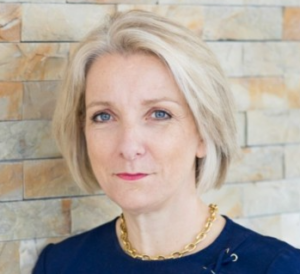Climate change: its consequences for the insurance industry
The climate change has been well proven in recent years. However, the recent spate of disastrous climatic events that insurers and reinsurers have had to deal with has demonstrated the importance of considering climate change and its risk to the sector.
Enemy number one: risk
Indeed, more and more climatic events such as major droughts, fires or floods have occurred in recent months. These events (which are expected to cost 2.4 billion euros in Belgium, Source: Assuralia) have had major consequences for P&C insurance, particularly with the increase in claims and their severity. But the consequences do not cease there. Climate change and the importance of the ecological transition, which are at the heart of political and economic discourse, also have consequences for both asset and liability management. This ecological transition affects the transition, physical and liability risks and drives down the value of assets. In addition, climate risk has consequences for modelling liabilities related to morbidity, longevity and mortality risks. These observations highlight the importance of integrating climate risk into the ERM of insurance companies, as well as implementing risk mitigation techniques.
Regulatory requirements
Taking this risk into account is essential for insurers, but they must also follow the regulations. Indeed, the ecological transition is also part of the various rules to which the insurance sector is subject, regardless of the level at which each player is operating.
The IDD (Insurance Distribution Directive) requires, for instance, that insurance products distributors take into account customers’ preferences regarding sustainability and ecological impact. The situation is similar with MiFID II (Markets in Financial Instruments Directive), which requires investment awareness.
In addition, local laws, such as the implementation of the Loi Pacte in France, are also having an impact on this market. For example, the Loi Pacte introduces a fundamental need for transparency towards customers regarding the ecological dimension of life insurance products, in the context of the launch of the Plan Epargne Retraite (PER). Moreover, the energy-climate law requires companies to establish extra-financial reporting to communicate effectively and transparently on the company’s ESG principles.
At European level, sustainability risks, which take into account environmental, social or governance issues, also influence the Solvency II framework, especially its first and third pillars. In the course of this year, adjustments to the SCR and MCR calculations will be made.
Besides regulation, some major players in the sector have taken part in various initiatives, such as the Principles for Responsible Investment, to provide carbon neutral investments. All of this shows that the sector is already well aware of the environmental issue. However, there are still areas that need to be addressed in order to make the insurance sector greener.
What is already being done
Green investments
Making your investments carbon neutral from an anthropogenic perspective is one of the actions you can take as part of a sustainable investment strategy. Sustainable investments do not stop there. Indeed, European regulations require transparency for insurers who invest their assets in more sustainable projects. In France, Article 29 of the Energy and Climate Law requires extra-financial reporting on the respect of ESG criteria in the investment policy.
Products customized to the customer’s sustainability preferences
Aside from the sustainable nature of investments, taking sustainability into account in the development of products and in the offer to customers has recently become a regulatory development. A first point to focus on in order to progress towards this practice, and which is recommended by the regulator in particular, is to take into account the opinion of the clients who will buy the products. This seems to be an obvious point, but if this aspect is increasingly emphasized, it is a crucial point of attention for insurance companies and distributors.
In the European market, products with ESG characteristics are already on sale, including life, savings and pension products, and home insurance. However, it is not always clear to consumers how sustainable these products are. Indeed, the report on consumer habits published by EIOPA underlines that 75% of the consumers surveyed cannot determine whether a product is really sustainable because of the overly complicated documentation. Moreover, 64% of them believe that this type of product is part of the greenwashing trend. In order to move even further in this direction, while being fully transparent to the customer, management indicators regarding sustainability can be implemented.
Globally, climate concern that affects the sector implies that products development and their specificities need to meet customers, companies, vulnerable people, regulators and governments needs. It is therefore necessary to adopt a sufficiently global and strategic vision to combine these various interests. This need for ESG transparency stems in particular from the SFDR (Sustainable Finance Disclosure Regulation), which has been partially implemented since 2021.
Solvency
As mentioned above, climate risks and challenges impact the solvency of insurance companies, in addition to other areas. More specifically, the integration of short- and long-term climate risk into the ORSA report is expected to become increasingly common practice within the sector. The amendment to the Solvency 2 regulation also came into force in August 2022.
On the other hand, it is clear that insurers need to take these risks into account in the tools used to model their solvency. Loss projections should provide a clear perspective on the new risks to be faced and their relationship to traditional risks and a view of the company’s capital through stress testing. However, the difficulty lies in the short term in the low visibility of the impacts for some actors and may lead to not assessing climate risk in the ORSA. Therefore, EIOPA suggests that insurers should anticipate the impacts of all types of long-term risks, which are almost immutable, and build the trajectory to integrate these risks into their models, at least to overcome the lack of data in this respect.
An opportunity for the sector to grow
The ecological transition, strongly encouraged by the authorities, can allow the insurance sector to develop. In particular, the climate crisis has allowed new markets to develop, e.g. the carbon market. In this case, insurance companies could help this type of market to develop, especially as they could be expected to offer insurance cover as investment in the technologies used in this type of market increases.
In addition to this, insurance companies have a key advisory role to play in helping their clients to reduce their exposure to climate risk and also to reduce losses from such catastrophes. By further increasing knowledge of this risk and managing it, the sector would have an entry point to grow and offer a risk engineering consultancy service. This could include advice on construction, or after a disaster, advising on a less vulnerable location for reconstruction. This is all the more useful and necessary when market players themselves say that areas are uninsured because the cost of doing so is too high and the policyholders are less well protected.
Obviously, climate risk has consequences for insurers and reinsurers and thus for the actuarial profession. Therefore, this issue should also be seen as an opportunity, for example to develop forward-looking risk models for physical assets. Furthermore, this change implies considering these impacts beyond the financial aspect. Indeed, although there are recommendations and rules imposed by regulators on different aspects (pricing, reserving, product development, etc.), it is wise to adapt one’s work by perceiving the phenomenon as a whole and integrating the impacts of the phenomenon on each element involved. For example, by reviewing the adaptability of models to climate risk using a systems thinking approach.
This change of approach, made necessary by the increasing prevalence of climate risk, also means that new products that promote innovative solutions can be created and that they can be priced in line with environmental interests.
Generally speaking, implementing climate risks into models and taking it into account in insurance policies are two actions that are necessary for the proper development of the sector. It is true that a lack of data can hinder development, but given the many and varied effects of climate change, adapting one’s assumptions now to advise insurance companies on financing, investment and product development is essential.
Sources:
Institut des actuaires, L’actuaire, acteur clé de la transition climatique
Quelles stratégies de rebond pour l’assurance vie avec la loi Pacte et la finance durable? (Analyse)
L’Investissement Durable et les Assureurs
Comment les assureurs vont verdir leurs offres
Pourquoi les assureurs accordent-ils autant d’importance à la durabilité
How P&C insurers can protect and power our journey to a more sustainable world
Playing our part: actuaries on a sustainable journey
Importance of climate-related risks for actuaries
Capturing the climate opportunity in insurance
La gouvernance des risques liés au changement climatique dans le secteur de l’assurance
Risque climatique – L’appréhender en pratique dans l’assurance
L’institut des actuaires – Quel rôle pour l’actuaire face aux risques climatiques ?
Changement climatique : quand le risque devient incalculable, et le sinistre ingérable















